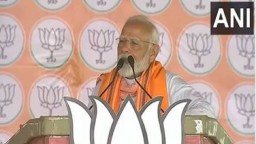Latest News
CHANGE IN INDIA’S STANCE DISCOMFORTS DRAGON

The South China Sea (SCS) has abundance of minerals and oil resources and estimated to contain 11 billion barrels of oil and 190 trillion cubic feet of natural gas. The area witnesses roughly 30% of the global maritime trade passing through it on its way to the highly trafficked ports in Southeast Asia. The conflict among the five states, namely the Philippines, Vietnam, China, Brunei, Taiwan, and Malaysia, has remained unresolved for decades. The claimant states, have divergent and sometimes overlapping territorial claims based on a variety of historical and geographical data. The current problems stem from the 1951 San Francisco Treaty, which followed Japan’s defeat in World War II. Within the terms of its surrender, Japan gave up its rights to its islands in the South China Sea, leaving a power vacuum in the region. No country was explicitly granted sovereignty over these waters, and China asserted its advantage by submitting the now infamous “nine-dotted line” claim covering almost the entire South China Sea in 1947. This line became its official claim and is known today as the “NineDash Line”. In 1982, the United Nations law established the exclusive economic zones (EEZs) but China reiterated its nine-dash line, refusing to clarify the limits of this line and rejecting the claims of other claimant countries. Ever since, tensions have built up over who owns the South China Sea and now China turning seven reefs into seven military bases, has made the South China Sea one of the most contentious areas of sea in the world.
THE MAIN STAKES OF THESE TERRITORIAL DISPUTES ARE
The abundant natural resources of the region, the geostrategic situation of the disputed area which is the gateway to the strait of Malacca and the port of Singapore, a control over the Paracels and the Spratlys islands ensures control over the supply of the economies of Northeast Asia and finally the region is one of the most important economic and strategic regions in the world. As of now it looks like a frozen conflict where none of the states is ready to give up any ground to reach a common solution accepted by all and thus, risk of armed conflict breaking out at any time always remain high.
HINDERANCES TO THE CONFLICT RESOLUTION
Inability of the Association of Southeast Asian Nations (ASEAN) to arrive at any common decision and play a leadership role to resolve the conflict. Most members in the region have either total dependency for economic and trade development or are major trading partners with China who has always insisted on bilateral talks to resolve any conflict and hence the blockade to any real solution. Though the United Nations Convention on the Law of the Sea (UNCLOS) establishes the rights of a sovereign state over the continental shelf surrounding it and the creation of exclusive economic zones (EEZs), China has always used “Nine-Dash Line”, to justify its viewpoint. Even a judgement by International Court of Justice (ICJ) in 2013 establishing EEZ rights of Philippines in SCS have been rejected by China as it doesn’t recognise the ICJ ruling calling it as an encroachment on its sovereignty. China intends “to prevent an internationalization or regionalization of the dispute and would like to prevent or weaken any move towards solidarity within ASEAN on these issues and continue to address them on a bilateral basis.” The recent US initiatives like creation of AUKUS, new alliance group in the region among Australia, United Kingdom and United States, and the formation of QUAD to which India is also a part adds to Chinese discomfort.
INDIA’S STAKES AND CHANGE IN POLICY
India’s 55 % of trade passes through the Strait of Malacca which opens into the South China Sea. If China controls the region, it will upset the global trade practices and countries like India will directly get affected. India has historically taken a neutral position in the disputes along the South China Sea involving China and countries of Southeast Asia, even as the tensions have threatened the security in the region. The shock of last year’s border clash and continuing tensions along the Line of Actual Control (LAC) has upended most assumptions underlying India’s China policy. India has recalibrated its response to China both on land and sea. In a major message to Beijing, the Indian Army confronted PLA on land and the Indian Navy made its presence felt in the waters of the South China Sea when a task force of four warships sailed on a two-month deployment with India’s Quad partners, the United States, Japan and Australia, and also conducted bilateral exercises with naval forces from South China Sea littoral states, including Singapore, Vietnam, Indonesia and the Philippines. India has been pushing for a rules-based order in the region, including by means of upholding the United Nations Convention on the Law of the Sea.
THE VIEWS EXPRESSED BY THE AUTHOR ARE PERSONAL
COL RAJESH BHUKAR The author is a Post Graduate in International Studies, Alumni of Defense Services Staff College, Wellington and College of Combat, Mhow








.png)






.png)




.png)
